Discover 11 hidden attractions, cool sights, and unusual things to do in Taxila (Pakistan). Don't miss out on these must-see attractions: Jaulian, Sirkap, and Taxila Museum. Also, be sure to include Sirsukh in your itinerary.
Below, you can find the list of the most amazing places you should visit in Taxila (Punjab).
Table of Contents
Jaulian
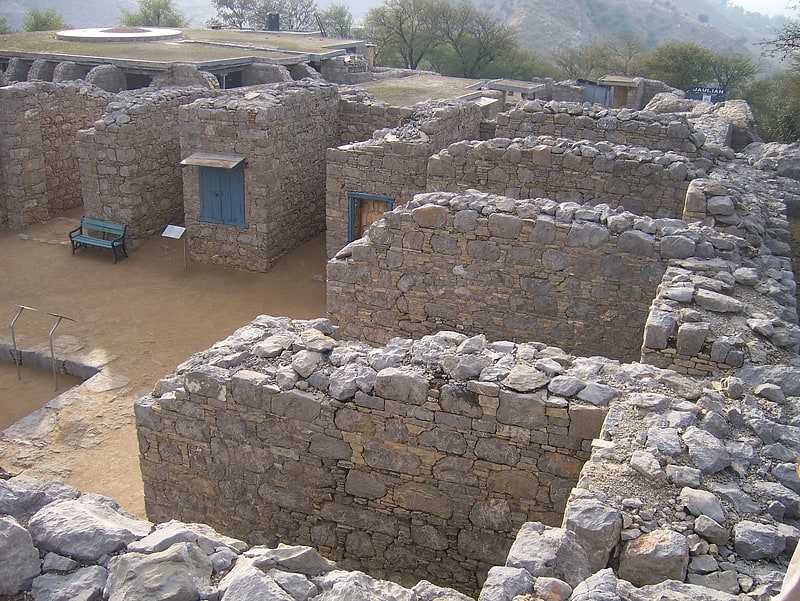
Also known as: جولیاں
Monastery in Pakistan. Jaulian is a ruined Buddhist monastery dating from the 2nd century CE, located in Pakistan. Jaulian is located in Haripur District, Khyber Pakhtunkhwa province, near the provincial border with Punjab and the city of Taxila.
Jaulian, along with the nearby monastery at Mohra Muradu, form part of the Ruins of Taxila – a collection of excavations that were inscribed as a UNESCO World Heritage Site in 1980.[1]
Sirkap
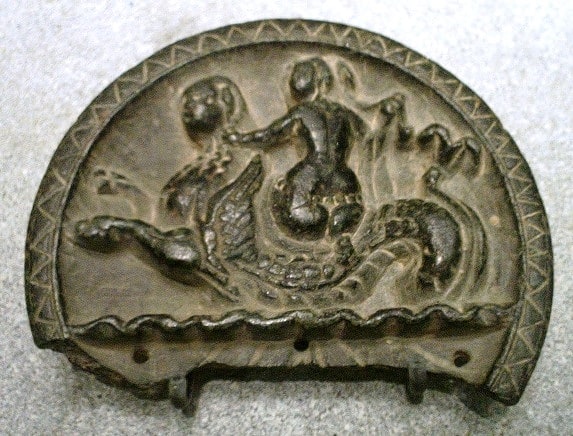
Also known as: سرکپ
Sirkap is the name of an archaeological site on the bank opposite to the city of Taxila, Punjab, Pakistan.
The city of Sirkap was built by the Greco-Bactrian king Demetrius after he invaded ancient India around 180 BC. Demetrius founded in the northern and northwestern Indian subcontinent an Indo-Greek kingdom that was to last until around 10 BC. Sirkap is also said to have been rebuilt by king Menander I.[2]
Taxila Museum
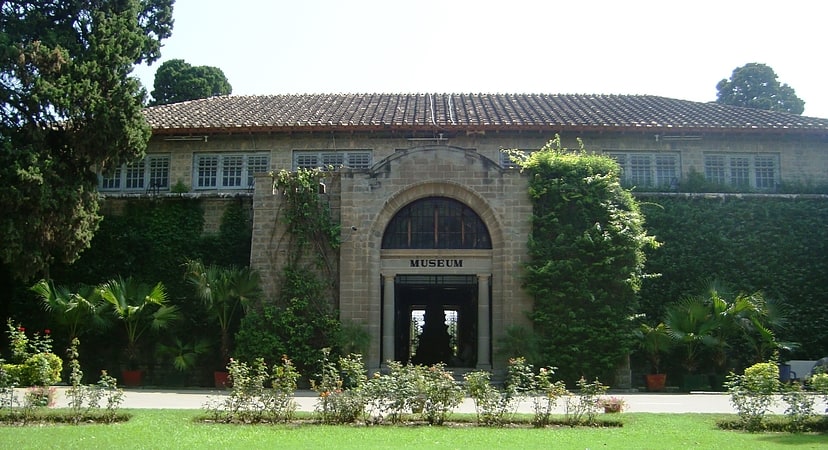
Museum in Taxila, Pakistan. Taxila Museum is located at Taxila, Punjab, Pakistan. The museum is home to a significant and comprehensive collection of Gandharan art dating from the 1st to the 7th centuries CE. Most objects in the collection were excavated from the ruins of ancient Taxila.
There are many historical sites nearby the museum. The ancient stupas and others ruins are nearby it.[3]
Address: Shahpur Rd, Taxila
Sirsukh
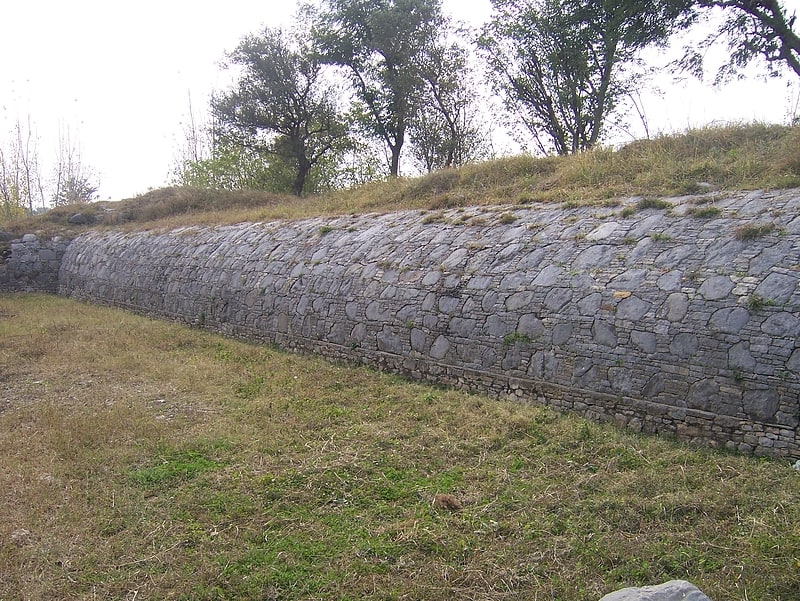
Also known as: سرسکھ
City. Sirsukh is an ancient city that forms part of the ruins at Taxila, near the modern day city of Taxila, Punjab, Pakistan.[4]
Bhir Mound
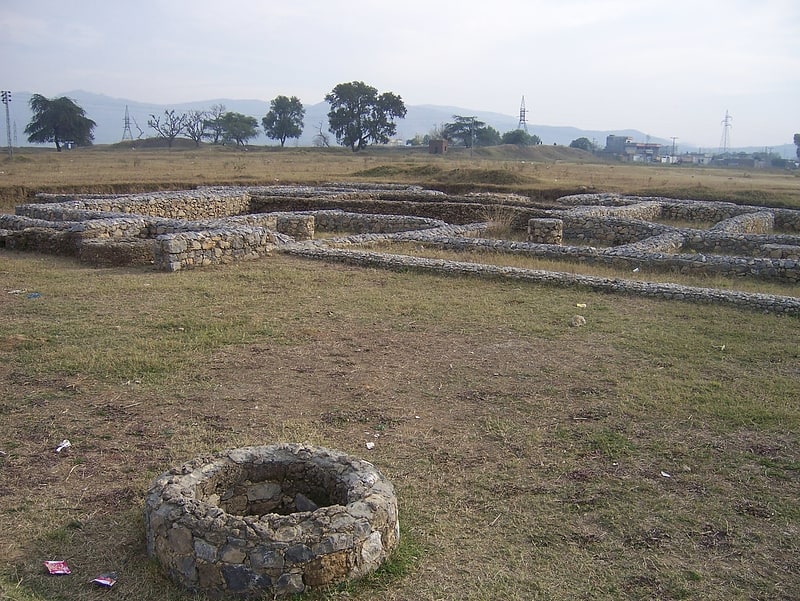
Also known as: بھڑ ماونڈ
Archaeological site in Taxila, Pakistan. The Bhir Mound is an archaeological site in Taxila in the Punjab province of Pakistan. It contains some of the oldest ruins of Ancient Taxila, dated to sometime around the period 800-525 BC as its earliest layers bear "grooved" Red Burnished Ware, Bhir Mound, along with several other nearby excavations, form part of the Ruins of Taxila – inscribed as a UNESCO World Heritage Site in 1980.[5]
Dharmarajika Stupa
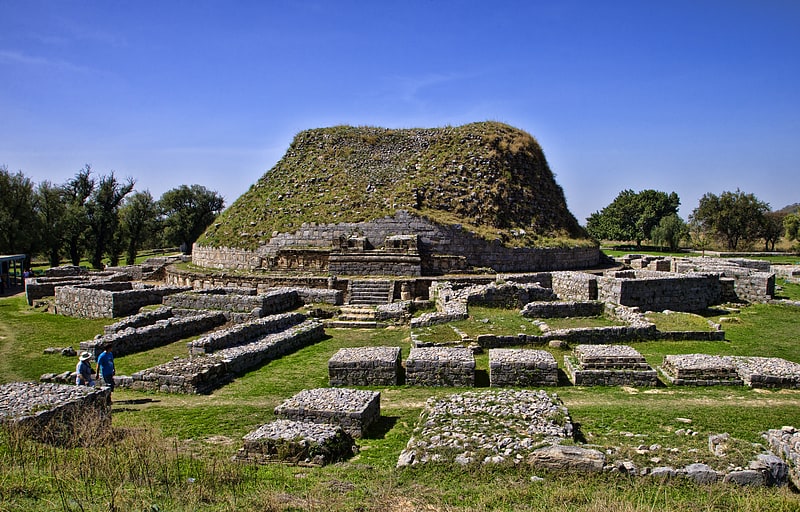
Also known as: دھرم راجک اسٹوپا
The Dharmarajika Stupa, also referred to as the Great Stupa of Taxila, is a Buddhist stupa near Taxila, Pakistan. It dates from the 2nd century CE, and was built by the Kushans to house small bone fragments of the Buddha. The stupa, along with the large monastic complex that later developed around it, forms part of the Ruins of Taxila - which were inscribed as a UNESCO World Heritage Site in 1980.[6]
Mankiala stupa
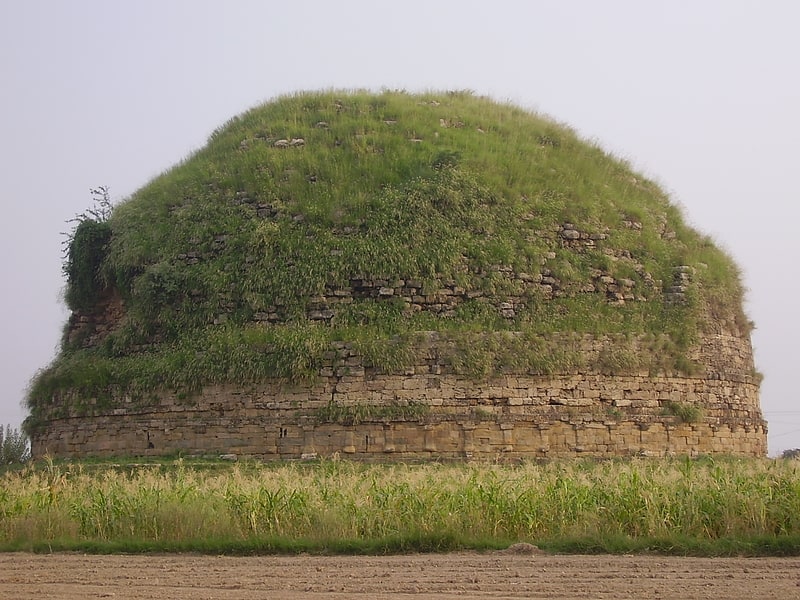
Also known as: مانکیالہ اسٹوپا
Historical landmark in Manga Village, Pakistan. The Mankiala Stupa is a 2nd-century Buddhist stupa near the village of Tope Mankiala, in Pakistan's Punjab province. The stupa was built by the Kushans and is said to commemorate the spot, where according to the Jataka tales, an incarnation of the Buddha called Prince Sattva sacrificed himself to feed seven hungry tiger cubs.[7]
Jandial
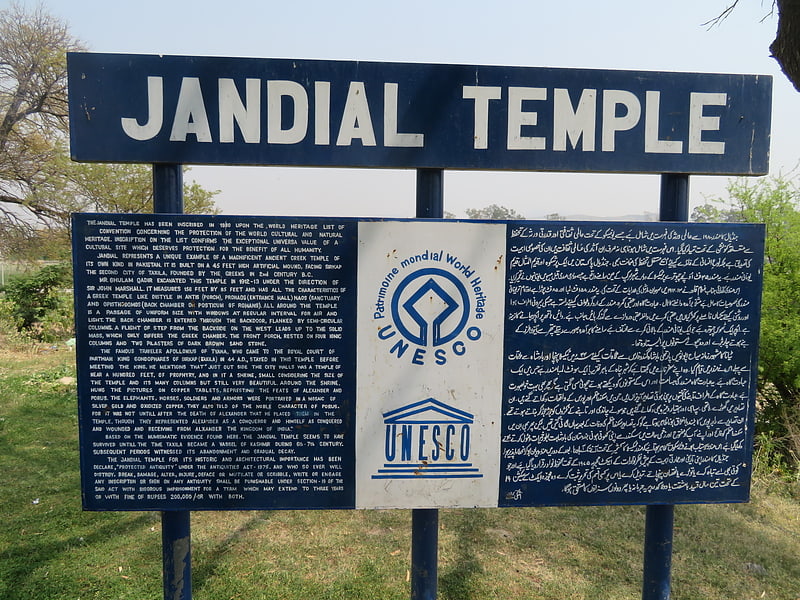
Historical landmark in Taxila, Pakistan. Jandial near the city of Taxila in Pakistan is the site of an ancient temple well known for its Ionic columns. The temple is located 630 meters north of the northern gate of Sirkap. The Temple was excavated in 1912–1913 by the Archaeological Survey of India under John Marshall. It has been called the most Hellenic structure yet found on Pakistani soil.[8]
Taxila Cantonment
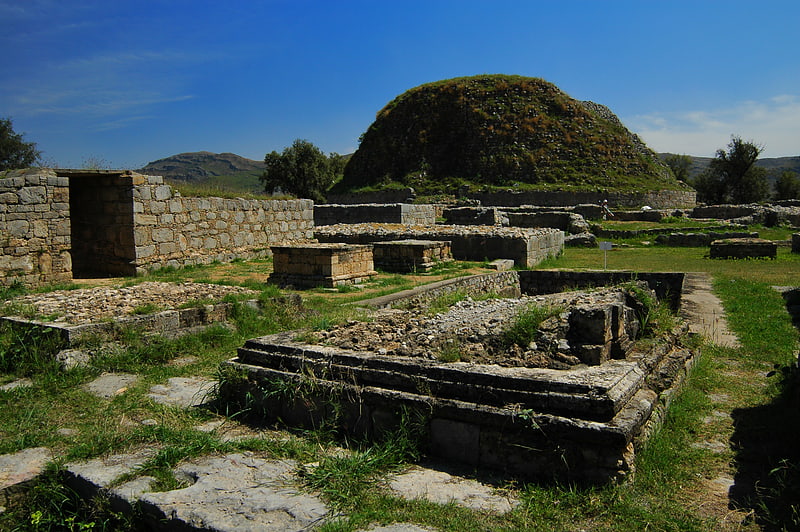
Taxila Cantonment is a cantonment adjacent to Taxila in Rawalpindi District, Punjab province, Pakistan. The city is home to Heavy Industries Taxila — a major defence, engineering conglomerate, and military corporation. Taxila Cantonment is also home to the HITEC University.[9]
University of Engineering and Technology

Also known as: یونیورسٹی آف انجینئرنگ اینڈ ٹیکنالوجی، ٹیکسلا
Public university in Taxila, Pakistan. The University of Engineering and Technology, Taxila is a public university located in Taxila, Punjab, Pakistan. It was established in 1975 as a campus of the University of Engineering and Technology, Lahore and chartered as an independent university in 1993. It offers bachelor's, master's and doctoral degrees in engineering and applied sciences.[10]
HITEC University
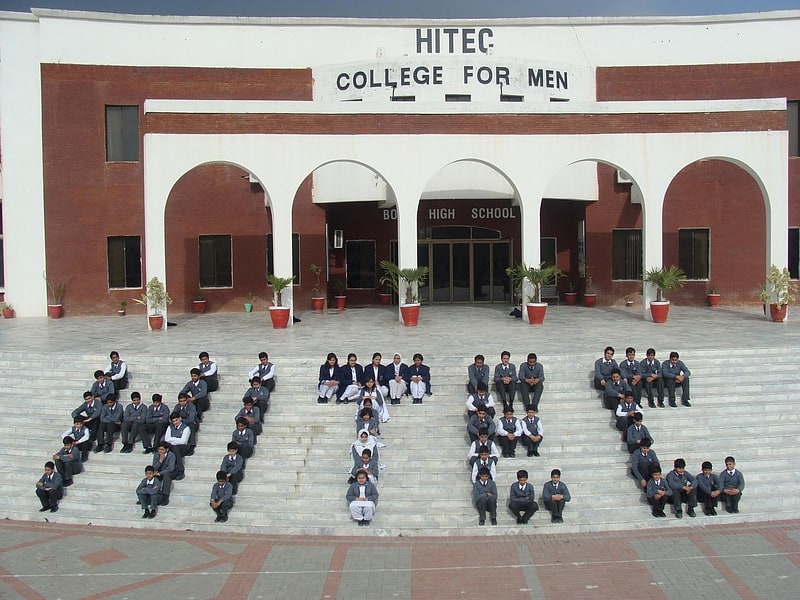
HITEC University is a private university located in Taxila Cantonment, Punjab, Pakistan.
Taxila, a historic seat of learning and an important archaeological site, is about 30 km north-west of Islamabad and Rawalpindi.
HITEC University commenced classes in November 2007 with an intake of 250 students, in affiliation with University of Engineering and Technology, Taxila. The university was granted its own charter in November 2009 by the government of Punjab. The university is sponsored by the Heavy Industries Taxila Education Welfare Trust.[11]